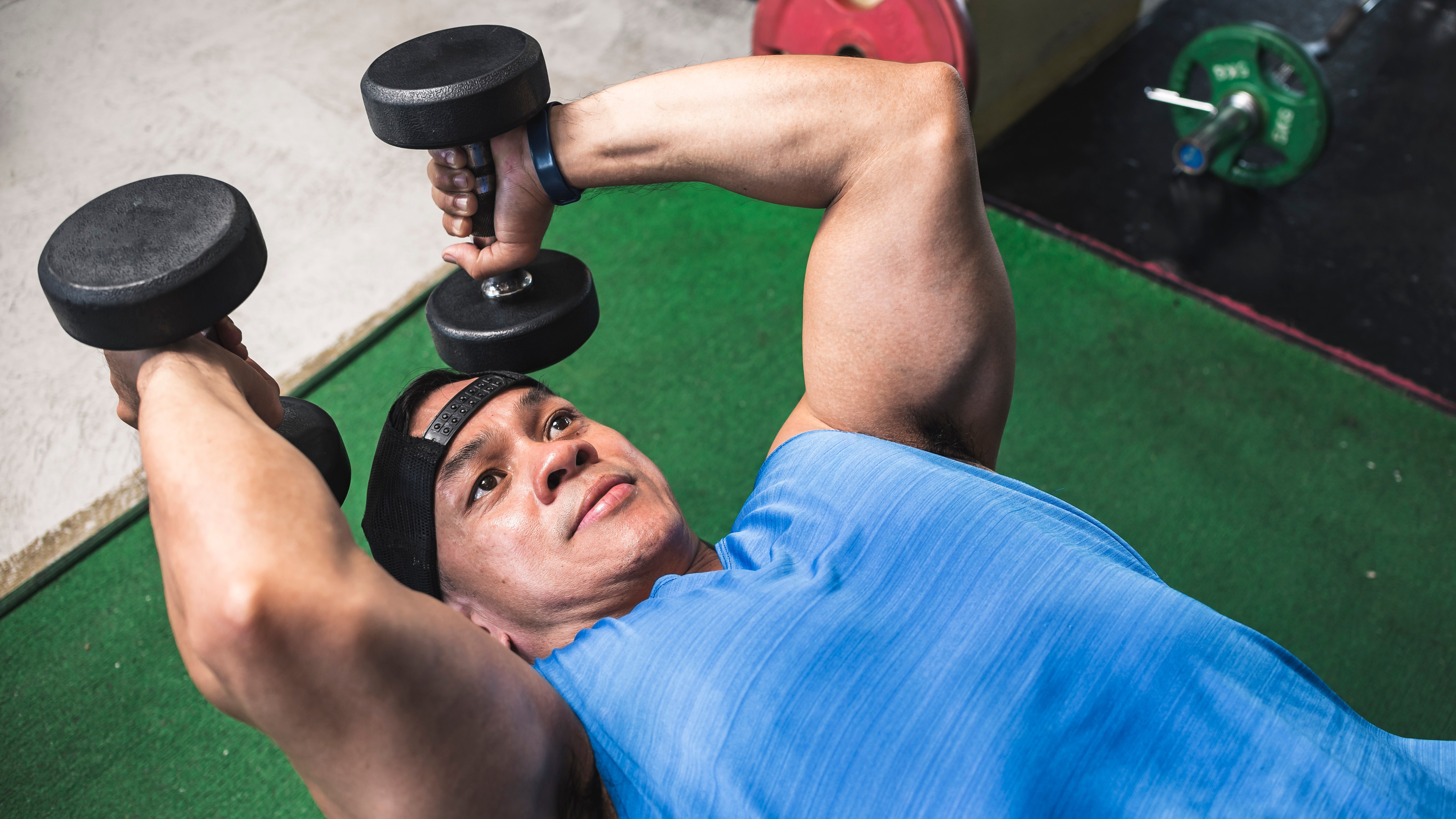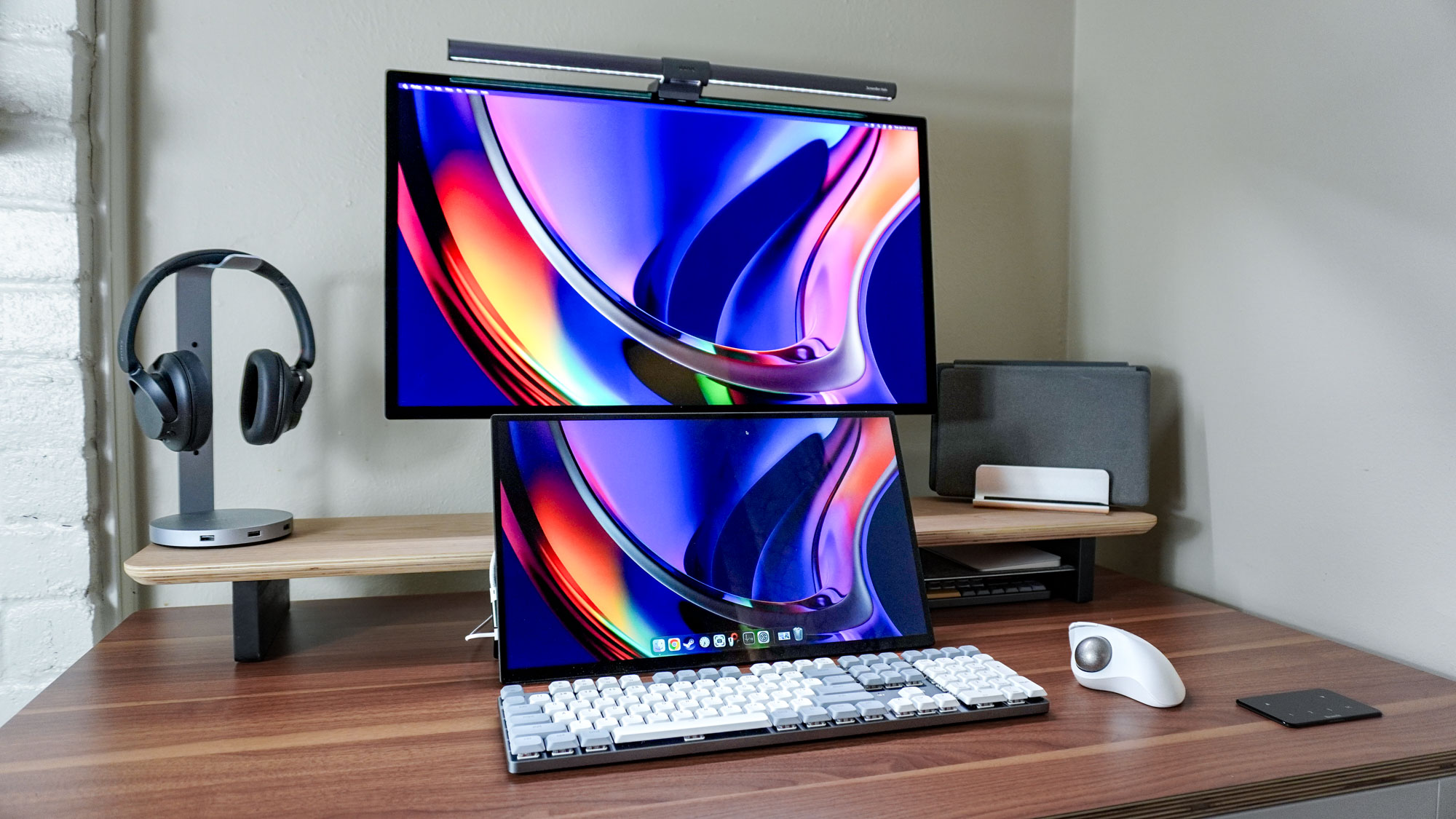How to do skull crushers and work your triceps
Here's how to do a skull crusher the right way

If one of your 2022 fitness goals is to work on your arm strength, we’ve found one of the best exercises for building your triceps. Along with isolating your triceps, skull crushers are great at helping you increase your bench press strength. But what are skull crushers, and how can you make sure you’re doing them with the right form? Read on to find out more.
Firstly, don’t let the name put you off here. Instead, think of it as a lesson about form. Skull crushers are named as such because if you drop the weight, you’re in danger of it falling on your head, but this shouldn’t happen if you grip the weight properly, and don’t start off with anything too heavy. If the name does put you off, they’re also referred to as lying tricep extensions. Below, we’ve summarized how to do a skull crusher, and how to ensure you’re getting your form right throughout the exercise.
Looking for more arm workout inspiration? We’ve found this exercise that sculpts your arms and abs using just your bodyweight, and the best resistance band exercises that build your arms without weights.
How to do a skull crusher
To do a skull crusher, lie on a bench and ensure that your entire body is supported by the bench, aside from your lower legs. Keep your lower back pressed into the bench, and extend a weight above your head, keeping a good grip on the weight, without locking your elbows.
Flex your elbows and lower the weight down towards the top of your head. Your arms should be perpendicular to your body. Continue lowering the weight behind your head, keeping the movement slow and controlled. Then lift the weight back up to your starting position and repeat.
The exercise can be done with a dumbbell (we’ve found the best adjustable dumbbells for weightlifting at home here), a barbell, or kettlebells. You can do the exercise holding one dumbbell between both hands, or increasing the weight to a dumbbell in each hand for more of a challenge.
Here's how to do a skull crusher with correct form:
Get instant access to breaking news, the hottest reviews, great deals and helpful tips.
Common mistakes
When it comes to getting your form right during this exercise, there are a few things to watch out for:
Loose grip: We’ve already mentioned this above, but be sure to grip onto the weight during the movement to avoid injury. Put your ego aside and start with a lower weight to work on your grip and your form during this exercise.
Remember to lower the weight behind your head: At no point should you be lowering the weight directly towards your forehead or skull. The weight travels behind the head.
Rushing through the exercise: The entire exercise should be done slowly, and with control, especially when the weight is moving down behind the head. This forces the triceps to work harder and stops you from rocking back and forth during the exercise.
It’s worth noting, this exercise can put pressure on the elbows, so if you’re recovering from an elbow injury, it’s a good idea to check with your doctor before adding this to your routine.
What are the benefits of skull crushers?
Skull crushers isolate the tricep muscle and put the tricep through a deep range of motion, which is great for building muscle. Compared to other tricep exercises, they also don’t put as much strain on the elbows.
Compared to exercises like bench presses, when you perform a skull crusher, your shoulders remain still, which means all three parts of the tricep — the medial head, the lateral head, and the long head, are engaged.
In addition to strong arms being an aesthetic goal, we use our triceps for pushing and pulling motions, so they’re important even if you’re not a bodybuilder. Strong triceps will make carrying the groceries, or pushing a baby carriage a little bit easier. They can also sculpt the arm muscles and help target the underarm part of the body, often referred to as ‘bingo wings’.
Skull crusher modifications to try
If you don’t have a weight bench, you can modify this exercise by performing it on an exercise mat on the floor (we’ve found the best yoga mats that double as exercise mats here).
For more of a challenge, use a barbell during this exercise, and increase the weight and the number of repetitions. You can also try doing the exercise on a weight bench at an incline to really up the ante.

Jane McGuire is Tom's Guide's Fitness editor, which means she looks after everything fitness related - from running gear to yoga mats. An avid runner, Jane has tested and reviewed fitness products for the past five years, so knows what to look for when finding a good running watch or a pair of shorts with pockets big enough for your smartphone. When she's not pounding the pavements, you'll find Jane striding round the Surrey Hills, taking far too many photos of her puppy.
 Club Benefits
Club Benefits






